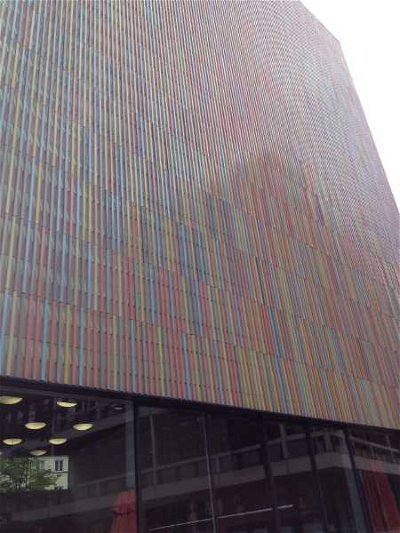10. In 1989, the Berlin Wall fell, which led soon to the reunification of East and West Germany. What is the German name for this non-violent revolution?
From Quiz Multifarious German Facts
Answer:
Die Wende
After World War II, Germany was divided into four occupation zones. The French, British and American occupation zone rapidly fused into the Bundesrepublik Deutschland (German Federal Republic), but the Russian occupation zone (Deutsche Demokratische Republik - German Democratic Republic) stayed apart for many years. Distrust between East and West grew so high that it led to the closure of the borders by way of the Iron Curtain and (in Berlin, an enclave in West Germany) the erection of the Berlin Wall.
1989 saw the end of all this and the start of the event called "Die Wende" (literally: "the turning point"). Hungary and Czechoslovakia relaxed the border controls, and an opposition party in East-Germany rapidly assembled 100,000 members and more. Weekly protest marches in various East-German cities were supported by the Church, and the government hesitated to oppress these movements, fearing a condemnation by the Polish Pope John Paul II.
On the evening of November 9, 1989 the East German government held a press conference that was live broadcast all over Germany. At the end of this press conference the spokesman (Gunter Schabowski) misinterpreted the new legislation and bluntly stated that East German people could ask for a permit to travel towards West Germany "sofort" - instantaneously. Large crowds crossed the borders and were welcomed by West Germans.
Die Wende continued: the Berlin Wall was demolished in the following weeks, the communist government of East Germany resigned, the exchange rate between East German mark and West German mark was fixed at 1 to 1, and finally on October 3, 1990 the two German countries were reunited into one.
Der Dolchstoss was the nickname militarist Germans gave to the Treaty of Versailles. Literally it means "the stab with the dagger".
Das Turmerlebnis (literally "the towering event") refers to the decisive moment when Martin Luther broke with the Roman Catholic Church and started a new version of Christian belief.
Der Kulturkampf ("the cultural war") refers to the later part of Bismarck's rule in Prussia at the end of the Nineteenth Century. After having reunited the hundreds of small German states under Prussian control, Bismarck decided to get rid of all internal forces that might cause a splitting. The Roman Catholic Church was a specific target.
 Or, in English, 'a German holiday'. In 2016, my mum and I went to Munich for a few days. Here are some of the photos I took from that trip.
Or, in English, 'a German holiday'. In 2016, my mum and I went to Munich for a few days. Here are some of the photos I took from that trip.  Or, in English, 'a German holiday'. In 2016, my mum and I went to Munich for a few days. Here are some of the photos I took from that trip.
Or, in English, 'a German holiday'. In 2016, my mum and I went to Munich for a few days. Here are some of the photos I took from that trip.  Quick Question
Quick Question = Top 5% Rated Quiz,
= Top 5% Rated Quiz,
 Top 10% Rated Quiz,
Top 10% Rated Quiz,
 Top 20% Rated Quiz,
Top 20% Rated Quiz,
 A Well Rated Quiz
A Well Rated Quiz